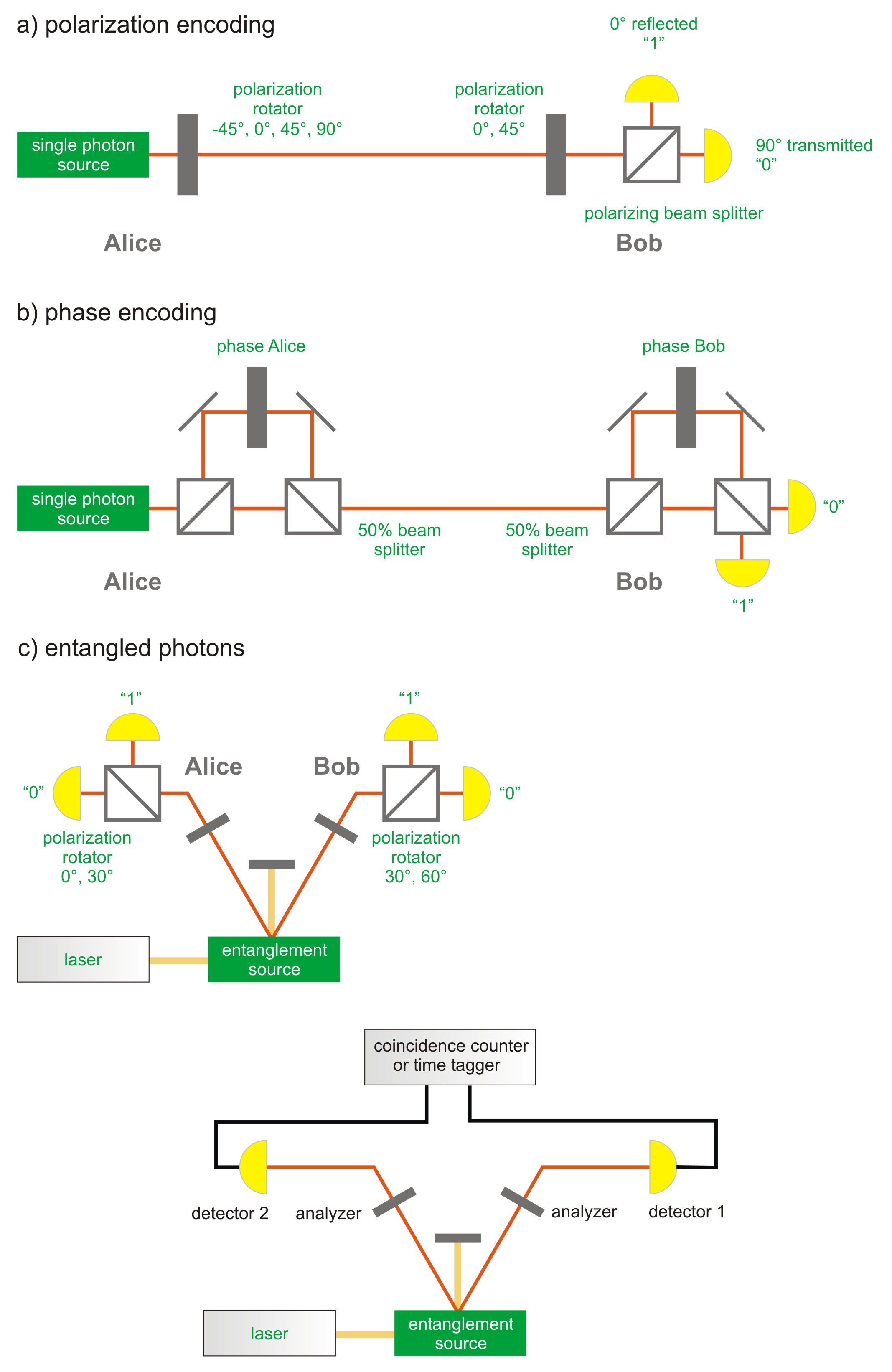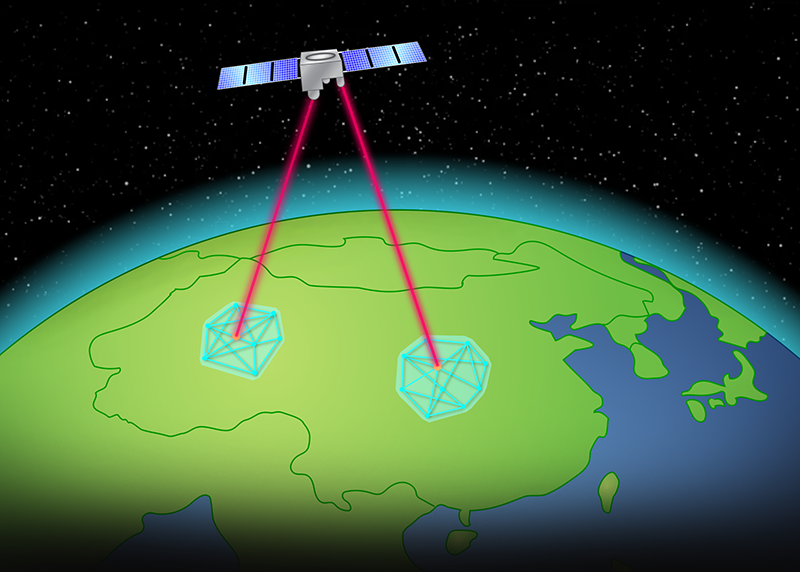Quantum communication is a fascinating topic that has captured the attention of scientists and the general public alike. This revolutionary technology utilizes the principles of quantum mechanics to transmit information securely and with unprecedented speed, presenting a potential solution to the ever-growing problem of data security in the digital age. But how does quantum communication work?
At its core, quantum communication relies on the phenomenon of entanglement, which is a fundamental property of quantum particles such as photons. When two entangled particles are separated, any change made to one particle will instantaneously affect the other, regardless of the distance between them. This unique property allows for the creation of a secure communication channel, as any attempt to intercept or eavesdrop on the transmission will be immediately detected by the parties involved. In this article, we will delve deeper into the mechanics of quantum communication and explore its potential applications in various fields.
Quantum communication works by using quantum entanglement, in which two particles are linked together in such a way that they affect each other’s behavior and cannot be described independently. To send a message, one particle is sent to the recipient and the other is kept by the sender. The two particles remain linked, so that when the recipient measures the state of the particle they received, it is instantly reflected in the state of the particle kept by the sender.

How Does Quantum Communication Work?
Quantum communication is a revolutionary new way of transmitting information securely, allowing for unprecedented levels of privacy and security. Quantum communication works by using the principles of quantum mechanics, allowing for the transmission of information with virtually unbreakable encryption. In this article, we’ll discuss how quantum communication works and why it is so secure.
What is Quantum Communication?
Quantum communication is a method of transmitting information using particles of light known as photons. These photons are sent over a secure channel and are used to encode the data being sent. By using the laws of quantum mechanics, the photons can be manipulated in such a way that makes them virtually unbreakable. This allows for the transmission of secure messages that cannot be intercepted or deciphered.
The most common type of quantum communication is quantum key distribution (QKD). In a QKD system, the sender and receiver exchange information using a shared key. This key is sent over a secure channel and is used to encrypt the data being transmitted. This allows the sender and receiver to communicate securely, even if the message is intercepted by a third party.
How Does Quantum Communication Work?
In order to understand how quantum communication works, it is important to understand the basics of quantum mechanics. In quantum mechanics, particles such as photons can exist in multiple states at the same time. This allows for the transmission of information in a more secure manner, as it is impossible for a third party to intercept the data without altering its state.
In a QKD system, the sender and receiver use a shared key to encrypt and decrypt the data being sent. The key is sent over a secure channel, which is known as a Quantum Channel. This channel is made up of particles of light, or photons, that are sent from the sender to the receiver. These photons are manipulated using the laws of quantum mechanics, allowing for the secure transmission of data.
Once the data has been sent, the sender and receiver can both use the shared key to decrypt the data and ensure that it has not been altered in any way. This makes quantum communication one of the most secure methods of transmitting data, as it is virtually impossible for a third party to intercept the data without being detected.
Frequently Asked Questions
Quantum communication is the process of transferring information using the principles of quantum mechanics. It is a relatively new technology that has the potential to revolutionize the way we communicate. In this article, we will explore the basics of quantum communication and answer some common questions.
What is Quantum Communication?
Quantum communication is the process of transferring information using the principles of quantum mechanics. It is a relatively new technology that has the potential to revolutionize the way we communicate. The most important aspect of quantum communication is the ability to transmit information securely, without any eavesdropping or interference. This is possible because of the laws of quantum mechanics, which allow for the transmission of particles of light (photons) in such a way that they remain secure from any outside interference.
How Does Quantum Communication Work?
Quantum communication works by using particles of light (photons) to carry information between two points. The photons are sent through a medium, such as a fiber optic cable, and the information is encoded in the photons themselves. This encoding makes it impossible for anyone to intercept the information, as the photons are constantly changing and the information is secure. The two points can then decode the information and send it back to the original sender.
What are the Benefits of Quantum Communication?
The main benefit of quantum communication is its ability to securely transmit information. Because of the laws of quantum mechanics, the information is completely secure from any outside interference and cannot be intercepted. This makes it perfect for sensitive information, such as financial or confidential data, which needs to be kept safe and secure. Additionally, quantum communication is much faster than traditional communication methods, as it eliminates the need for routing information through multiple servers and networks.
What are the Limitations of Quantum Communication?
One of the main limitations of quantum communication is its range. Currently, quantum communication is limited to relatively short distances and is not suitable for long-distance communication. Additionally, quantum communication requires specialized equipment, which can be expensive and difficult to set up. This can make it difficult for smaller organizations to utilize quantum communication.
How Does Quantum Communication Compare to Traditional Communication?
Quantum communication offers many benefits over traditional communication methods. As already mentioned, it is much more secure and cannot be intercepted. Additionally, it is much faster than traditional methods, as it eliminates the need for routing information through multiple servers and networks. However, it is important to note that quantum communication is still limited in range and requires specialized equipment, which can be expensive and difficult to set up.

In conclusion, quantum communication is a fascinating and rapidly advancing field that has the potential to revolutionize the way we transmit and process information. By harnessing the strange properties of quantum mechanics, scientists have developed a variety of methods for transmitting secure messages over long distances without the risk of interception or tampering. While the technology is still in its infancy, the potential benefits are enormous, and we can expect to see many exciting developments in the coming years.
As we continue to explore the mysteries of quantum mechanics, we can only imagine what other amazing applications and discoveries lie ahead. Quantum communication is just one example of how the field is transforming our understanding of the universe and pushing the boundaries of what we thought was possible. As we work to unlock the secrets of this strange and fascinating realm, we can look forward to a future where communication is faster, more secure, and more powerful than ever before.



